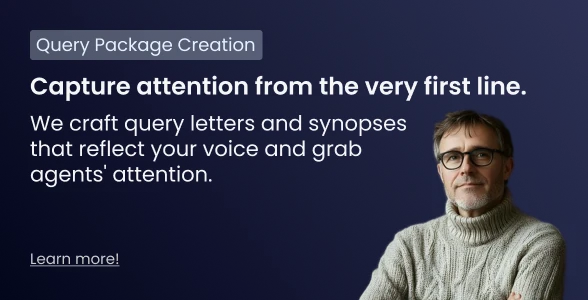Navigating the Academic Minefield: Understanding and Avoiding Predatory Journals

In the competitive world of academic publishing, researchers are under increasing pressure to "publish or perish," with funding, promotions, and professional recognition often tied to publication records. This intense demand has given rise to an unfortunate phenomenon: predatory journals. These deceptive publications exploit the eagerness of researchers to disseminate their work. While they often promise rapid publication and wide visibility, submitting to a predatory journal can damage a researcher's credibility and undermine the validity of current and future academic work. This post explores what predatory journals are, why they are harmful, how to identify and avoid them, and what to do if you find yourself falling victim to one.
What Are Predatory Journals?
Predatory journals are illegitimate or deceptive academic publishers that prioritize profit over scholarly integrity. Unlike reputable journals, which adhere to rigorous peer review and editorial standards, predatory journals often provide little to no peer review and charge authors high publication fees, sometimes without clearly disclosing them upfront. These journals work hard to mimic the appearance of respectable journals, making it difficult to distinguish them.
Many predatory journals operate under the guise of being open-access while requiring authors to pay article processing charges (APCs) to make their work freely accessible online. While open access is an increasingly popular publishing model, predatory journals exploit it by charging fees without providing the services and scholarly processes that justify those costs.
In essence, predatory journals prioritize making money over contributing valuable knowledge to the current academic discourse.
Why Are They Bad?
The consequences of publishing in a predatory journal can be significant and far-reaching for both the individual and academia as a whole. Foremost, the lack of peer review puts the quality and credibility of the published research into question. This undermines the scientific record and may lead to unsuspecting researchers citing flawed or unsubstantiated work.
Association with predatory journals can also harm an individual's reputation and career advancement. Academic institutions and hiring committees often scrutinize publication venues, and papers published in dubious outlets may be disregarded or even held against the author.
Predatory journals can also entrap researchers financially, hitting them with unexpected fees and refusing publication until payment is made. They may also retain copyright, making it difficult for authors to withdraw their work or submit it elsewhere.
On a broader level, predatory journals erode trust in scholarly publishing. It becomes harder for readers to discern which studies are credible, which can slow scientific progress and lead to misinformation.
How Can You Avoid Accidentally Submitting to a Predatory Journal?
Avoiding predatory journals requires vigilance and informed decision-making. Here are some practical steps you can take to help you steer clear:
- Check for Indexing: Reputable journals are typically indexed in major databases like the Web of Science, Scopus, or PubMed. A journal not indexed in these databases warrants further scrutiny.
- Consult Whitelists and Blacklists: Resources such as the Directory of Open Access Journals (DOAJ) list reputable open-access journals. Conversely, archived versions of Beall’s List or the newer Cabells’ Predatory Reports can be used to check for predators.
- Assess the Peer Review Process: Legitimate journals should clearly outline their peer review procedures and editorial policies. Be wary of journals that promise unrealistically fast publication (the average time from submission to publication is 6 to 12 months) or lack transparency.
- Examine the Editorial Board: Look at the listed editorial board members. Are they recognized experts in the field? Are their affiliations verifiable? Are they even real people?
- Check the Journal Website and Sample Articles: A website with poor design and sample articles riddled with grammatical errors are bold red flags. A legitimate journal should have a professional online presence and produce quality written work on subjects within a defined scope.
- Ask Colleagues or Mentors: If you're unsure about a journal, seek advice from experienced researchers or librarians. They can often spot warning signs more easily.
What Can You Do If You Accidentally Submit to a Predatory Journal?
Even careful researchers can fall into the trap of a predatory journal. Whether you discover your error at the beginning or after publication, there are steps you can take to limit the impact.
- Withdraw Your Manuscript: If the article hasn't been published, request withdrawal in writing. Keep records of all correspondence.
- Avoid Paying Fees: If you can, refuse to pay any publication fees. If you've already paid, consider disputing the charge with your credit card company.
- Seek Legal Advice or Institutional Support: Some universities have policies or legal support in place to assist researchers dealing with unethical publishers.
- Report the Journal: Consider reporting the journal to relevant authorities, such as the Committee on Publication Ethics (COPE) or academic listservs.
- Learn and Move On: Use the experience as a learning opportunity. If asked, acknowledge your mistake, understanding of the situation, and commitment to avoiding predatory journals in the future. Publishing future work in reputable journals will re-establish your credibility.
Is Anything Being Done to Stop Predatory Journals?
Fortunately, awareness of predatory journals has increased significantly, and efforts are underway to mitigate their impact.
- Awareness Campaigns and Education: Universities, research institutions, and professional organizations are offering training and resources to help researchers recognize and avoid predatory practices.
- Policy Development: Funding agencies and academic institutions are developing policies to discourage or penalize publication in predatory journals. Some grant applications now require that publications come from vetted sources.
- Improved Indexing Standards: Databases are refining their criteria for indexing journals, making it harder for predatory publishers to gain legitimacy.
- Legal Action: In some cases, governments and organizations have taken legal action against predatory publishers. For example, the U.S. Federal Trade Commission successfully sued the publisher OMICS Group for deceptive practices.
- Technological Solutions: Tools and algorithms are being developed to detect suspicious publishing patterns and flag potentially predatory journals automatically. These include The Predation Index and the Academic Journal Predatory Checking System.
Predatory journals represent a serious threat to the integrity of academic research, exploiting the pressure to publish and the complexities of the modern publishing landscape to take advantage of early-career scholars and those from under-resourced institutions. The ability to recognize and avoid predatory journals is crucial for maintaining the credibility of your work and field. While efforts to combat these journals are gaining traction, individual awareness and diligence remain the first line of defense. By staying informed and cautious, you can elevate your reputation and help preserve the integrity of scholarly communication.
Stand out for the right reasons. Scribendi editors help you identify reputable journals and ensure your manuscript meets rigorous academic standards.






